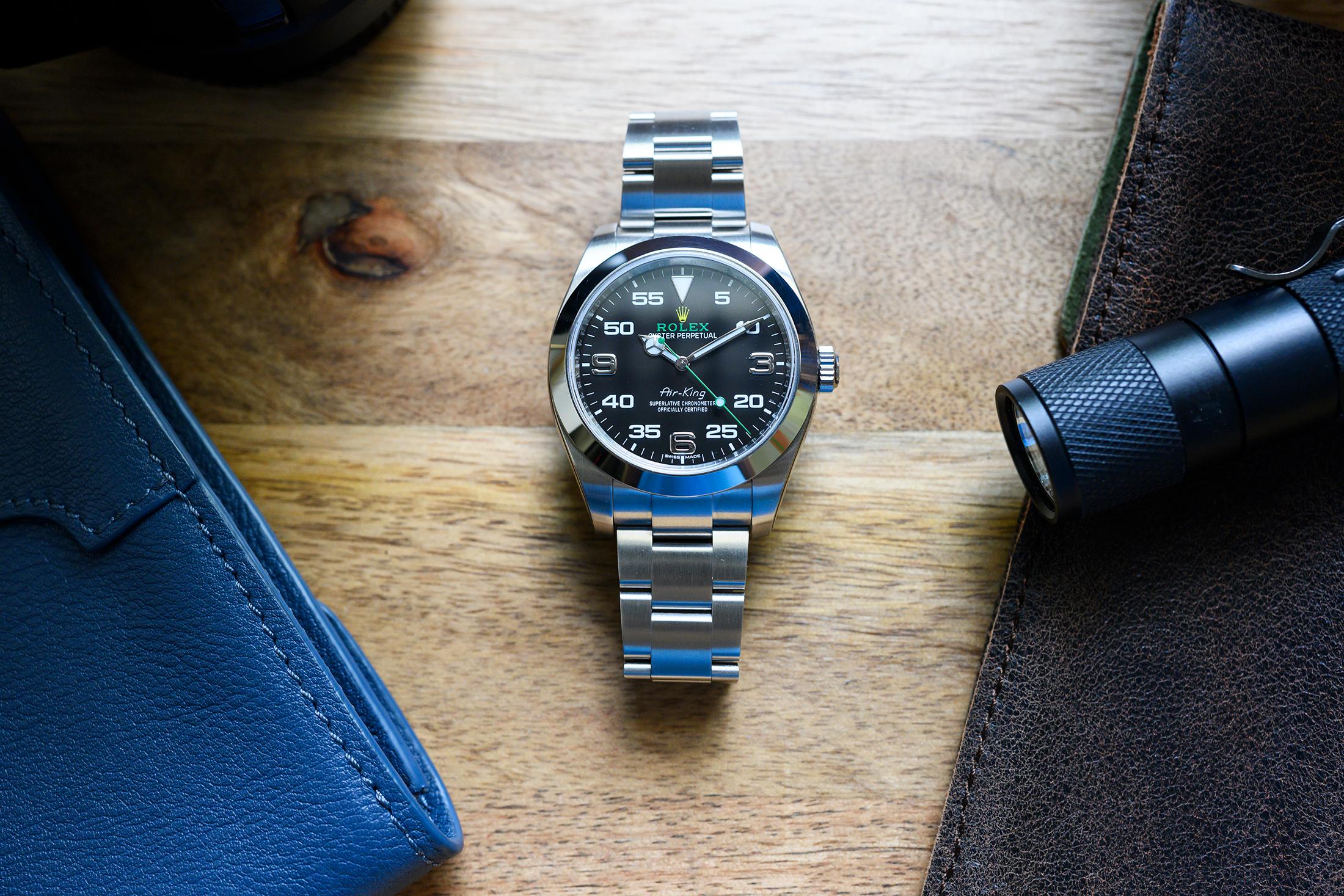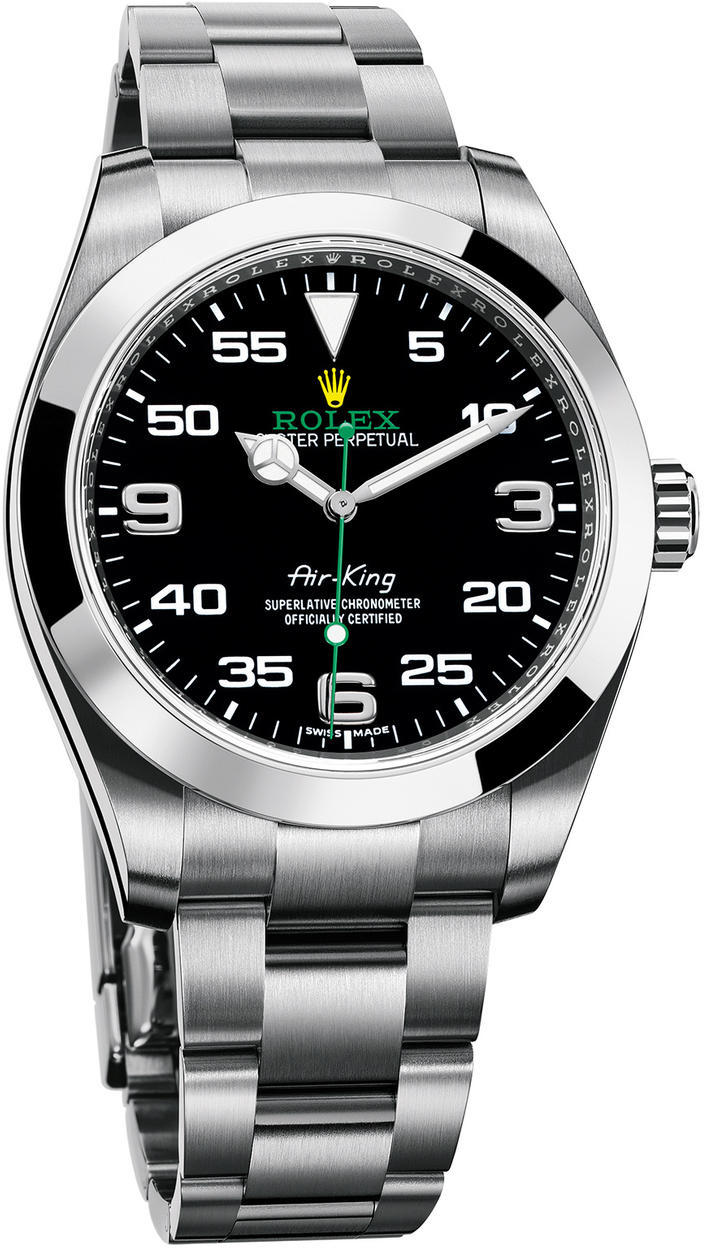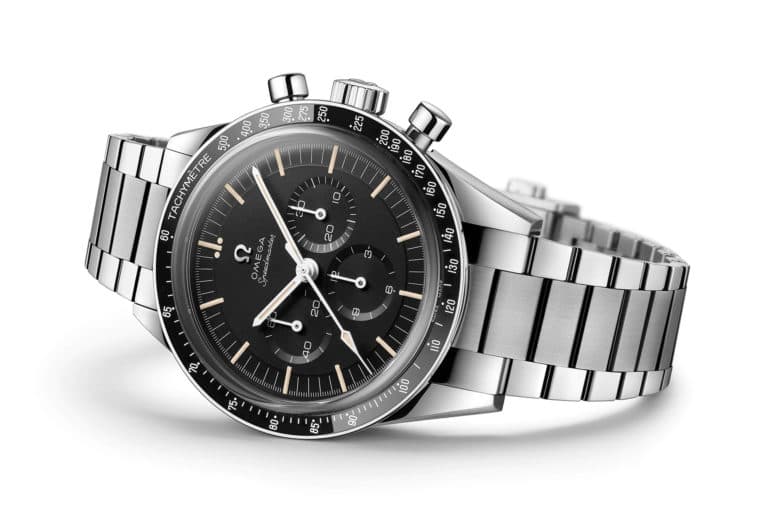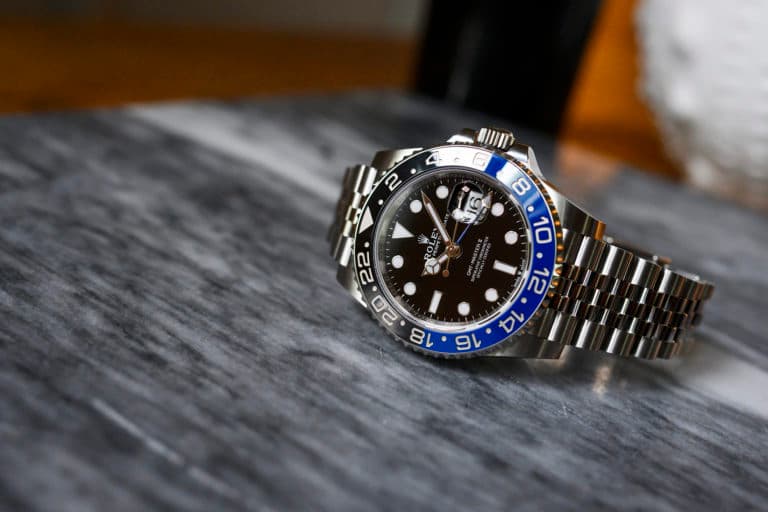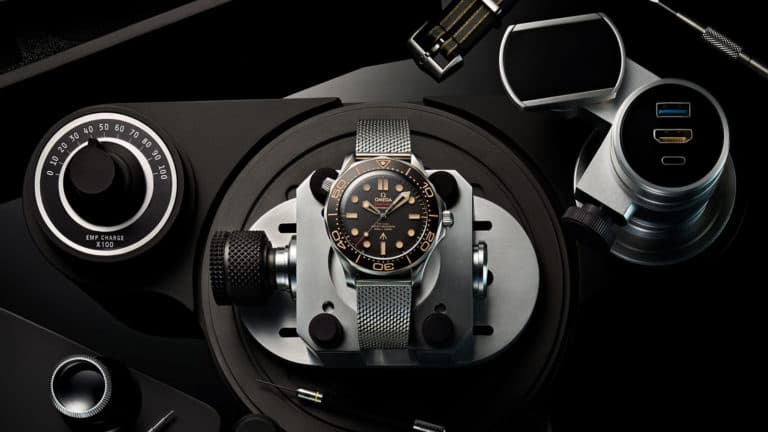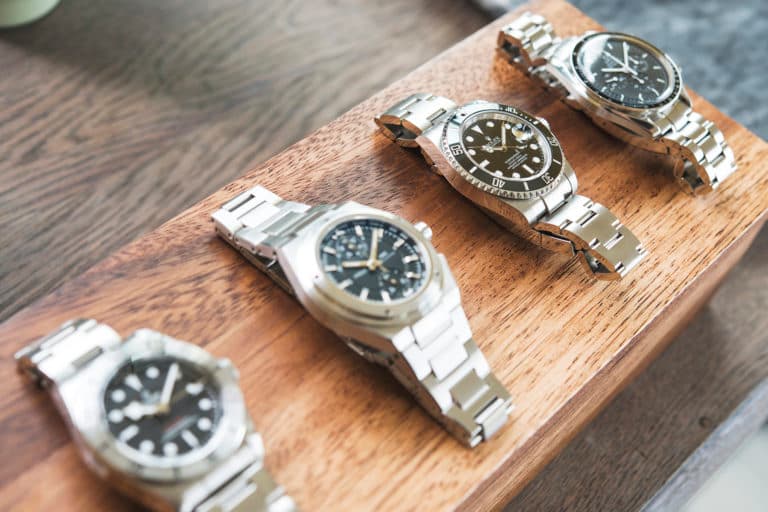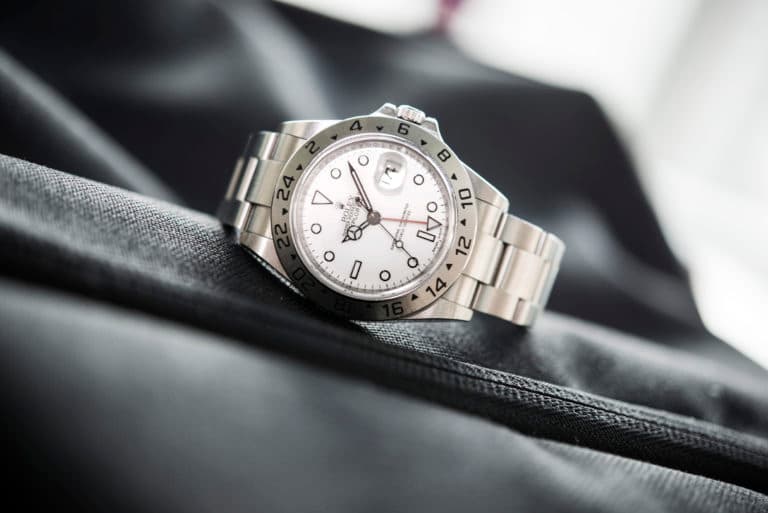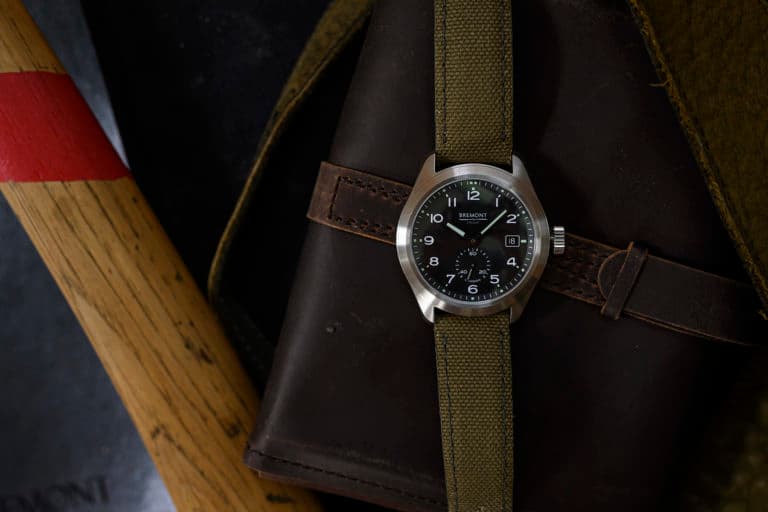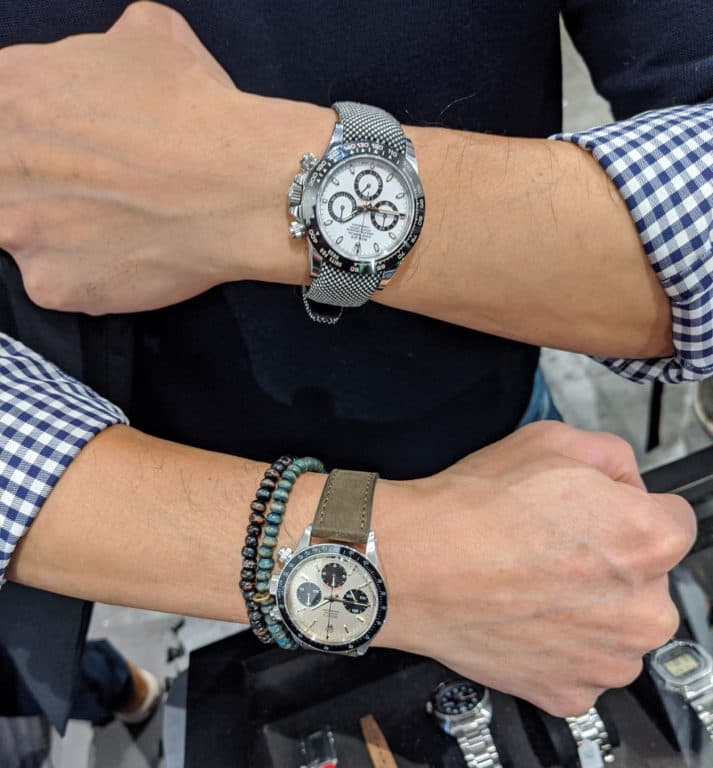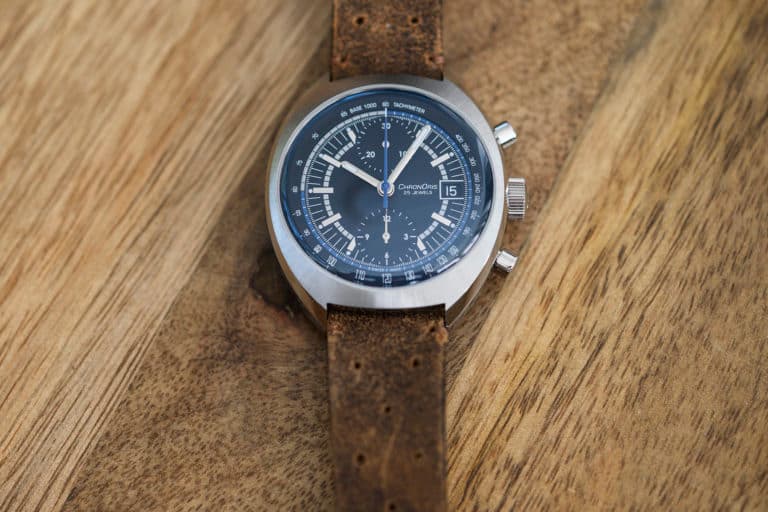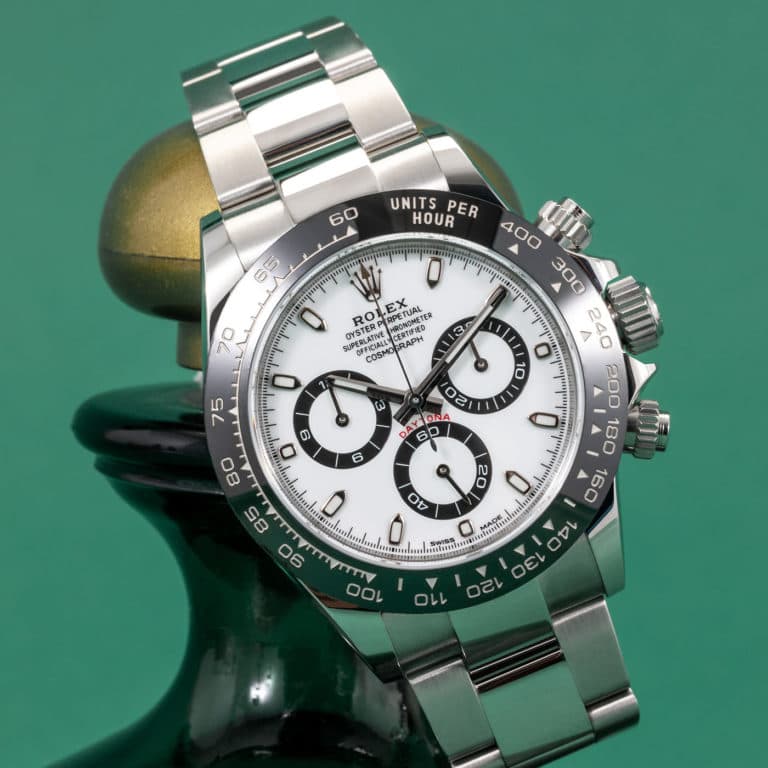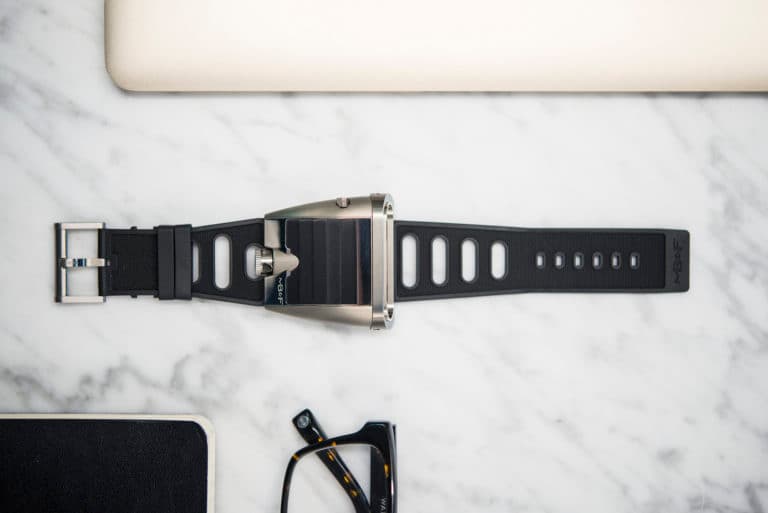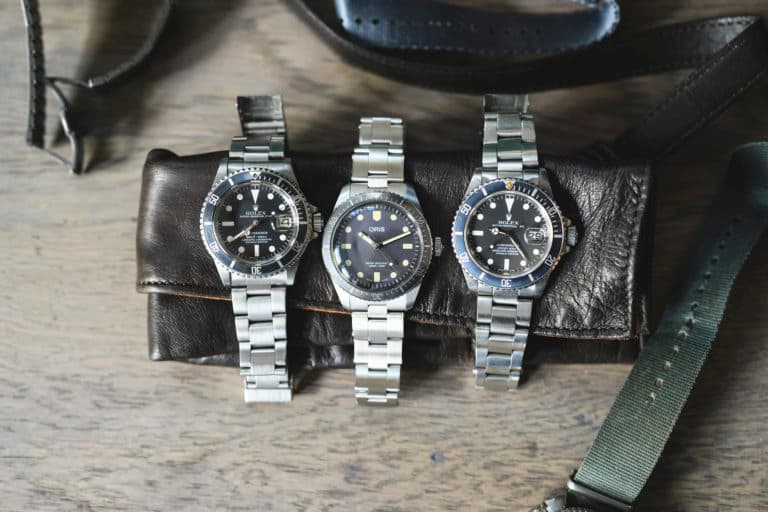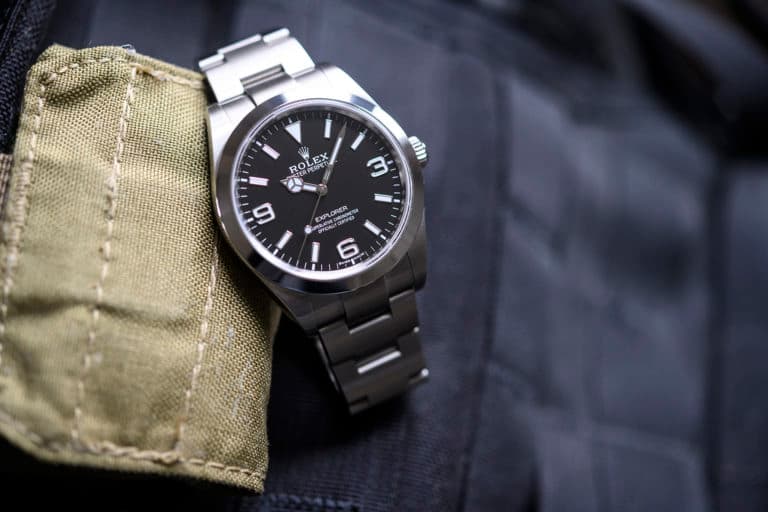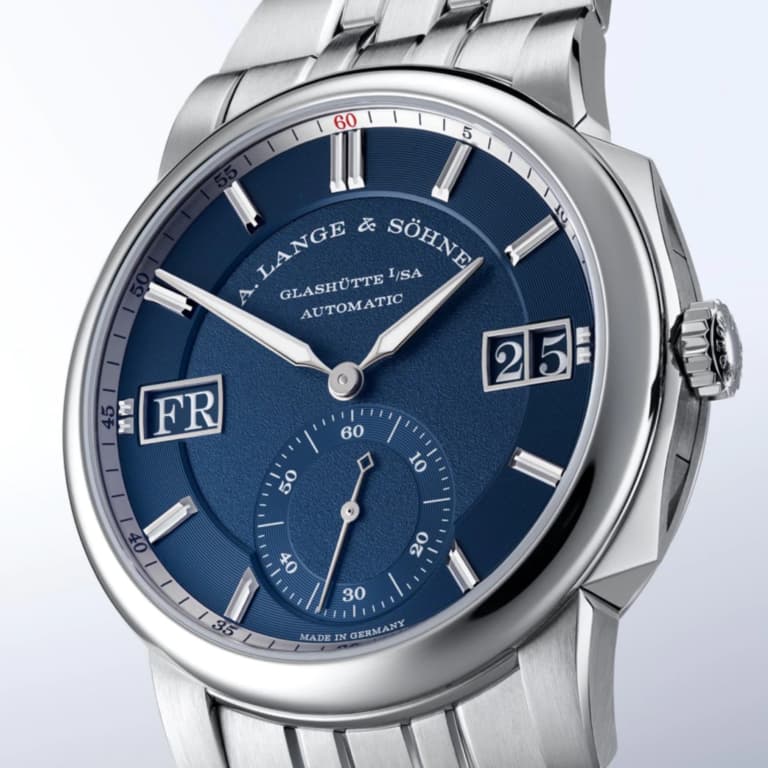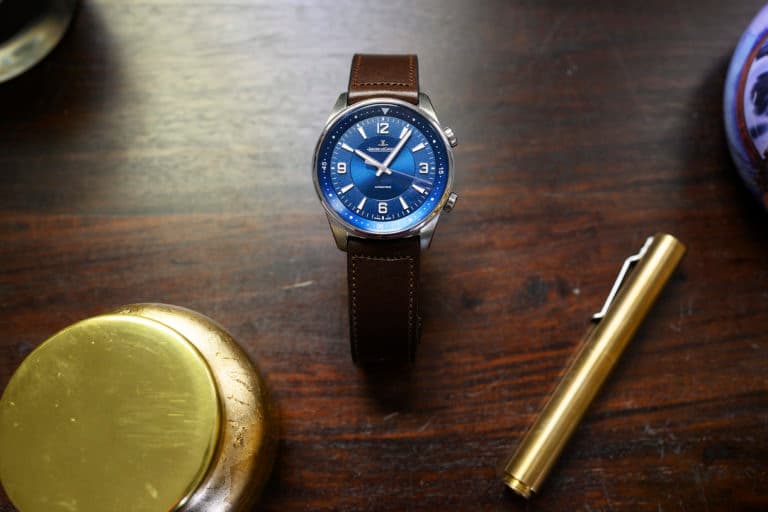Rolex is nothing if not predictable. They’ve created a script that works, and they stick to it, meaning new releases rarely stray into surprising territory. There are exceptions to the rule, of course, and when Rolex introduced the new Air-King reference 116900 at Baselworld in 2016, it raised a few eyebrows. It was a watch that, unlike the new steel Daytona introduced the same year, was decidedly unpredictable.

The Air-King name has a long and well understood history, and what we got in 2016 didn’t seem to conform with that established understanding. That’s not to say we’re dealing with anything groundbreaking here, it’s a time only watch with decent water resistance, anti magnetic qualities, an oyster bracelet, and a screw down crown. In other words, pretty standard fare for Rolex. What it does have is a dose of flair not often attributed to steel sport watches from the Crown.
In an attempt to find meaning in the Air-King 116900 we spent some time fitting the watch into a daily routine. A proper appreciation of the name can only be had with some historical context, so let’s take a brief look at the history of the Air-King.
Where it began
The Air-King is the result of a variety of watches put to use during WWII by RAF pilots who preferred the size and legibility of the Rolex Oyster family of watches. Rolex had assigned names like Air-Giant and Air-Lion to these purpose built oyster cased watches which placed more precise minute demarcations around the dial. In 1945 Rolex consolidated all Air prefix watches by releasing the Air-King. The first Air-King references, the 4925 and 4499 were labeled Oyster Air-King, which utilized the hand wound caliber 10.5 (hence the absence of the word Perpetual on the dial).

Rolex Air-King ref. 4499 – image credit Rescapement
It wasn’t until 1957 that the Air-King would get a longstanding place within the Rolex family of professional watches in the reference 5500, which remained in production for 32 years, until 1989. A variety of other references, such as the 5700 and 5504, were made in much the same window, with different features such as a date or two-toned construction. The 5500 family laid the aesthetic foundation of what the Air-King would be for generations. That is to say, a simple and formal take on the 1016 Explorer.

Rolex Air-King ref 5500 – image credit AnalogShift
That theme would continue in 1989 with the reference 14000, which saw the optional addition of 3, 6 and 9 Arabic numeral hour markers, also like the Explorer I. The 14000 would remain in production through the year 2007 (as the 14000M, a that point), before being replaced the 114200. Each of these lived in entry level territory, and lacked any real connection to pilot watch foundations of the name. And so it was, in 2014 the Air-King officially went out of production, seemingly destined for future obscurity alongside names like Space-Dweller and Turn-O-Graph.
Just 2 years later Rolex threw us a curveball by releasing an entirely new Air-King in the reference 116900. Not only did the new watch not conform to the prior 50 years of the Air-King identity, it was a shot back to the original intention of the Air-King, a pilot’s watch.
The Air-King ref. 116900

The newest Air-King released in the midst of a massively hyped year for Rolex at Baselworld alongside the new Daytona reference 116500, which finally brought the black ceramic bezel to a steel case and white or black dial. That watch is, to this day, the most difficult modern regular production Rolex to source at retail on the planet. Suffice to say, the Air-King stood in some pretty big shadows when it was released. The fact that it was objectively less beautiful than the 116500 didn’t help its cause, either.

At a glance the Air-King has a lot going on for a watch with no complications. Between the 3-6-9 Arabic numerals lives a prominent minute scale, along with the actual numerals each 5 minutes. This means 11 different numerals appear around the dial, 3 representing hours, and 8 representing minutes. At 12 o’clock sits a large lumed triangle as is customary on many Rolex professional models.
If that arrangement weren’t odd enough, Rolex have printed the crown and brand on the dial in throwback yellow and green coloring which, along with the entirely green seconds hand, make for a flourish of color and application style not often associated with modern Rolex. At 6 o’clock the throwback theme continues with the same “Air-King” script first seen on the reference 5500. Taken all together, the dial takes a bit of warming up to.

Within the 116900 beats the Rolex built caliber 3131. The movement is well understood and trusted having been in production since the ‘90s and having seen action across watches from the Explorer to the Submariner lines. As you’d expect, it’s a chronometer grade automatic movement and features a Paramagnetic blue Parachrom hairspring, meaning it’s less susceptible to temperature and magnetic variances. This makes the fact that they used a Milgauss case for the watch all the more curious.
The Air-King uses the same case as the Milgauss, meaning it has all the heft and height of the famously anti-magnetic watch. The case is polished along its walls and brushed across the top, including the lugs, and is fitted to a fully brushed oyster bracelet with easy link Oysterclasp.
On The Wrist

Traditionally, Air-King watches wear very easily on the wrist thanks to their smaller case sizes and slim profile. The 116900 is not that. The Milgauss case is robust and every bit of that is felt in the Air-King. The case is 40mm in diameter and 14mm thick as measured by our calipers, and for a time-only watch that thickness is a tough pill to swallow. Especially in light of the already (mostly) impervious movement. The Daytona, an automatic chronograph, is nearly 2mm thinner, by comparison.
That said, this is not a difficult watch to wear by any stretch, it just feels like it could, and indeed should be better. The bracelet does a fantastic job of evenly distributing the heft across the wrist, so it never feels overly top heavy or unwieldy. At the same time, this isn’t a watch that’s going to disappear from the wrist when not in use, for better or worse, it’s always felt.

Once accustomed to the wrist feel, using the watch takes a little getting used to thanks to the unusual dial configuration. Everything is perfectly legible, there’s just a bit of navigation that’s needed to suss out the time at a glance. The applied Arabic numerals at 3, 6, and 9 are fully polished, meaning they can easily disappear from sight depending on the angle. One would have expected lumed numerals here as found on the Explorer I reference 214270 (which was also introduced in 2016).
All this adds up to a pretty funky identity on the wrist. It’s a mish mash of styles uncharacteristic of Rolex, and that’s also what makes it start to grow on the wearer. With the legibility and heft issues sorted, it’s a watch that grabs you for its playfulness. This is a watch best judged by some quality wrist time, and not by pictures.
Who’s it for?

If you don’t find joy in the sheer character of the watch, there are arguably better watches to be had in the Rolex professional range. If the anti-magnetic qualities speak to you and the heft is welcome, the Milgauss will likely better serve you. If you like the utilitarian nature of the dial but need it toned down a bit in color and in mass, get the Explorer I. If you want something slimmer and more formal with a tinge of sportiness, get the Oyster Perpetual. If however, you find all of the above options just too predictable and conservative, the Air-King is nicely situated at the intersection of each, with a bit of flair thrown in for good measure.
At retail the Air-King is $6,200 placing it above entry level options like the Oyster Perpetual. That’s $2,000 less than a Milgauss, but less than $300 under the Explorer I 214270, which is arguably a better overall watch. Sure that doesn’t have the pilot’s watch theme going for it, but the benefits (wearability, legibility, legendary history, classic design) make for a solid case up against the Air-King.
Competition
Browsing StockX there are a few viable alternatives to the Air-King worth some consideration at the price of $6,200. Let’s see how it fares against competition outside of the Rolex stable.

The latest Spitfire Pilot’s Watches to come out of IWC have yet to hit the market, but they offer an obvious comparison point as the standard bearer of the category. This is a watch with history, sized perfectly at 39mm, and even offers IWC latest in-house caliber 32000. Sure it lacks the brand cache of a Rolex, but it’s priced well under $5k, making it a tempting option if you need the Pilot’s watch benefits.
Panerai Radiomir California 448

If what appeals to you about the Air-King is the funky dial and hefty wrist presence, the Radiomir with California dial may be a good alternative. The mixture of Roman and Arabic numerals add a lot of character while the 47mm case will provide much of the presence. The low Ask is currently over $6,200, but an aggressive Bid would be advised.
Conclusions

The Air-King reference 116900 offers a unique take on the pilot’s watch, and perhaps even more so, on a Rolex. As hard as it is to put your finger on this one, there is an undeniable charm here that could vex future generations, given speculators’ penchant for buying and holding modern steel Rolex sport watches. Surely, this isn’t a watch for everyone, and the oddities at play here differentiate it from a sea of predictable watches from Rolex; and while those watches may be better than the Air-King by any measure, they won’t elicit the same emotions. Assuming you’ve warmed up to it at all, that is.


